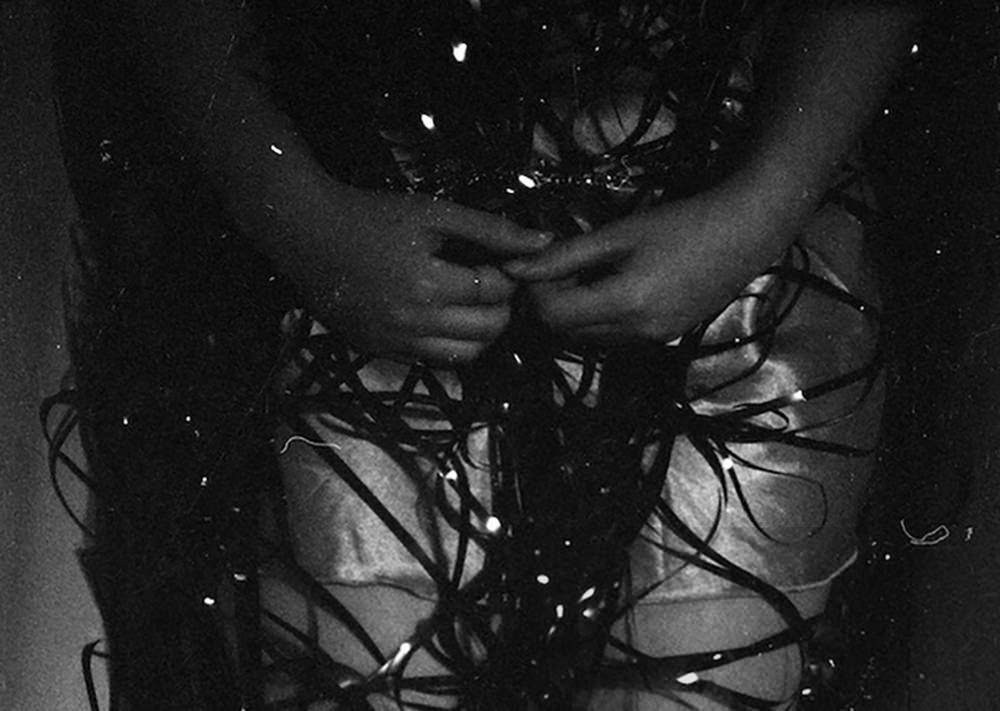Section 2
Writing the (raped) body
Heather Briony McGinn
Abstract
The following are poetic works created during Quinn Eades’ ‘Writing the Body’ workshop, conducted as part of the Art(i)culations of Violence Conference in 2017. These pieces, presented as a poetic tryptic, explore the écriture feminine and écriture tatouages approaches to creative writing through the medium of free verse poetry in an attempt to tell the story of a raped body from within a raped body. This style of writing produces poetry that is fractured and rhizomatic, and serves as a witness to both violence performed on the body and the healing performed by the body.
Keywords
Poetry; Violence; Fracturing; Écriture Feminine; Free Verse
FULL TEXT
#1 (NOW)
I keep my scars
On index cards
A library of memory
I keep your words
Caged like birds
Within my ribcage
#2 (THEN)
My body is not your
Diagnostic
Tool shaped from lust
My body is not your
Protracted
Kink turned outward
My body is not your
Question
Answered with bruises
My body is not
Is not your body
#3 (AFTER)
He let me go
He let me go barefoot
Barefoot onto the asphalt
The asphalt sharp with heat
Heat awakening horror
Horror living in the skin
The skin hurting and itchy
Itchy from violence and fear
Fear growing fur on the teeth
The teeth set against the tongue
The tongue dry and foul
Foul with secret wrongdoing
Wrongdoing done
Done by him
He let me go
He let me go barefoot
ERA RESEARCH STATEMENT
RESEARCH BACKGROUND
Quinn Eades reminds us that Helene Cixous writes that “Life becomes text starting out from my body. I am already text” (Cixous in Eades 2017). The writing of the raped body, then, is perhaps a matter of translation between physical sensations and textual expressions. But how to record an ever changing experience such as the one of existing in a body that is simultaneously hurting and healing? As Eades writes, “This body is a layered, becoming, disintegrating, growing, shifting moment in time” (2015, 12). Writing the (Raped) Body is the result of this exploration.
RESEARCH CONTRIBUTION
Jeanette Winterson writes of Kathy Acker’s work, “Vomit, shit, urine, cocks, cunts, assholes, blood, the body are intimately described, and not in the language of cloudy romance” (2002, ix) . Writing the (Raped) Body attempts to record the text created by the hurt and healing body from a place within that body. This piece engages with the power of poetics in order to tell the story of a raped body from within a raped body. This practice produces work that is unexpected, fractured, mirroring the body that has written it, and not tied to any particular poetic form or tradition. Laurie Weeks recalls being inspired by Acker and the beat poets, and describes the writing process as one of wanting to “…derange language…to practice literary alchemy in order to liberate myself” (Boaz 2011, 45).
RESEARCH SIGNIFICANCE
Writing the (Raped) Body records the existential challenges faced by the abused body, revealing the sensation of healing through the medium of poetry. These pieces are written as an exercise in exploring the process of writing from the body, and designed to be an observation and a description of the raped body. Read as a tryptic from #1 to #3, this work moves through the feminist idea of écriture feminine (Cixous in Barry, 2009, 122), and approaches Eades’ theory of écriture tatouages (2015, 12), echoing the declaration, “This body that writes is the living of a life” (ibid.).
These two theories provided the platform for this piece. Written from the female body and speaking about hurt caused by the violence perpetuated by a male body, this poetry sits as witness to the failings of a patriarchal society and uses the notion of écriture feminine to convey the truth about rape. The theory of écriture feminine is problematic, however, as it is gendered. Moving beyond the gender binary, then, makes room for a new theory of written language; that of écriture tatouages. This approach is present in this piece also, as this piece is written from a body, and a body does not need to identify with one gender over another in order to produce the written word. It simply writes: “I am body, in this moment, writing, this” (ibid.)
WORKS CITED
Barry, P. (2009). Beginning Theory: An Introduction to Literary and Cultural Theory. Manchester, UK: Manchester University Press.
Boaz, A. (2011). Deranging Language. Publishers Weekly, 258(34): p45-45.
Eades, Q. (2017). ‘Art(i)culating the Body: Writing Workshop with Quinn Eades’, SA Gender, Sex and Sexualities Postgraduate and ECR Research Conference 2017: Art(i)culations of Violence, July 12th 2017 , University of South Australia.
Eades, Q. (2015). all the beginnings. North Melbourne, VIC: Tantanoola/Australian Scholarly Publishing Ltd.
Scholder, A., Cooper, D., & Winterson, J. (2002). Essential Acker – the selected writings of Kathy Acker. New York, NY: Grove Press.
This work is licensed under a Creative Commons Attribution-NonCommercial-NoDerivs 3.0 Australia License.
ISSN: 2202-2546
© Copyright 2015 La Trobe University. All rights reserved.
CRICOS Provider Code: VIC 00115M, NSW 02218K

